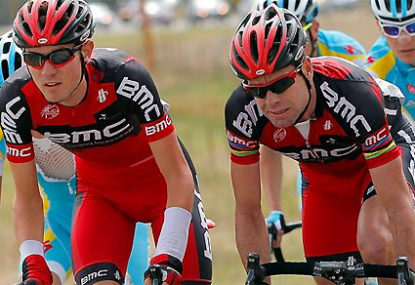Jared Watkin
new author
Roar Rookie

The first full week of racing at the Tour de France has wrapped up, and as the race heads out of the Pyrénées and the general classification riders begin to sort themselves out from the rest. Let’s take a look at three key things we learnt from week one:
Froome is a force to be reckoned with
Chris Froome has been the favourite to win this year’s Tour almost since last year’s edition finished, where many thought he had the capacity to win had he not been riding for Sir Bradley Wiggins.
His determination and pure athleticism last year saw him take the leadership mantle at Team Sky from Wiggins when he was unavailable, and his ungainly riding style has also made him a noticeable rider among the peloton.
Coming into Stage 8, many knew this was the first chance for the general classification contenders to show their wares as the race headed into the Pyrénées with a Hors catégorie climb (unable to be categorised) to the summit of Col de Pailhères, and a finish atop a category one climb into Ax-Trois Domaines.
After ascending the main summit with the help of his Sky teammates, Froome saw his chance on the final climb to the finish, chasing down young Colombian Nairo Quintana and dropping his second-hand man Richie Porte to take the stage win 51 seconds ahead of Porte.
Fellow overall honours favourite Alberto Contador looked a shadow of his former self in the wake of Froome’s aggressive riding to finish one minute 45 seconds in arrears.
What is most extraordinary is that Froome’s effort was the third fastest recorded ascent of Ax-Trois Domaines behind Roberto Laiseka’s and Lance Armstrong’s lung-busting climbs in the 2001 Tour, where somewhat more remarkably, the climb happened towards the end of the second week of racing.
Naturally, this has drawn some question marks about whether or not it was pharmacologically assisted, but until proven otherwise, it was a remarkable feat of athleticism and really highlighted why Froome is the favourite to hold onto the yellow jersey all the way to Paris.
Cadel is past his prime
It seems like a laughable title, doesn’t it? Cadel is 36 years old, and he was already ‘past it’ when he won the Tour de France back in 2011, but that didn’t stop him then, so why should it now?
Despite his age, he still managed a third place finish at this year’s Giro d’Italia, which could be taken as a sign of things to come, whether they be for better or for worse.
Many commentators felt that going so hard in the Italian stage race left him vulnerable in the Tour de France, and really reduced his chances of challenging for general classification honours.
He certainly hasn’t been helped so far by his BMC teammates.
In the Team Time Trial of Stage 4, BMC settled for ninth place on the day, 26 seconds behind stage winners OricaOrica-GreenEDGE, but more importantly, 23 seconds behind Team Sky and Chris Froome.
And of course during Stage 8, Evans’ team was dropped early with Tejay van Garderen left to carry Cadel up the steep climbs. But even the supposed heir apparent at Team BMC struggled with the pace set by Sky over the final climb, and Evans was left to his own devices.
This proved fruitless however, and he struggled to the finish, crossing the line over four minutes behind the stage winner Froome.
It may be too early to write him off completely, there are still two individual time trials to come, which Cadel relied upon heavily during his 2011 win.
But the man himself has conceded that his general classification hopes are over and it may be time to rethink his approach.
Peter Sagan could be the next Erik Zabel
A very bold statement indeed, and possibly a bit premature, but with Peter Sagan looking like winning the maillot vert (green jersey) for a second consecutive year, he will be the first rider to achieve the feat since the great German sprinter.
Sagan had a dream debut Tour last year winning three stages in the first week and the overall points classification.
After the first week of this year’s race, some have argued that he has not looked as confident as he did last year, possibly because of the expectations surrounding him.
Stage seven saw his only stage win so far after his Cannondale team put in a brilliant ride over the category one Col de la Croix de Mounis to drop his main sprint rivals, and set him up for a relatively easy victory.
And he still has several minor placings to go along with it, finishing second twice and third once. There is no reason to suggest that he is down on form, even when compared to last year.
Keep in mind, there are still several chances for the Slovakian to pick up stage victories – and he no doubt will – we could see him extend his green jersey lead to well over 100 points and cement himself as one of the great sprinters.
Obviously it is a lot of pressure to label him the next Erik Zabel, who of course won six consecutive green jersey’s at the Tour de France around the turn of the millennium.
But like many before him thought Mark Cavendish would do, Sagan is the best placed rider to challenge the feats of Zabel.
And to think he is still only 23 years old, he certainly has a long career ahead of him to do it.